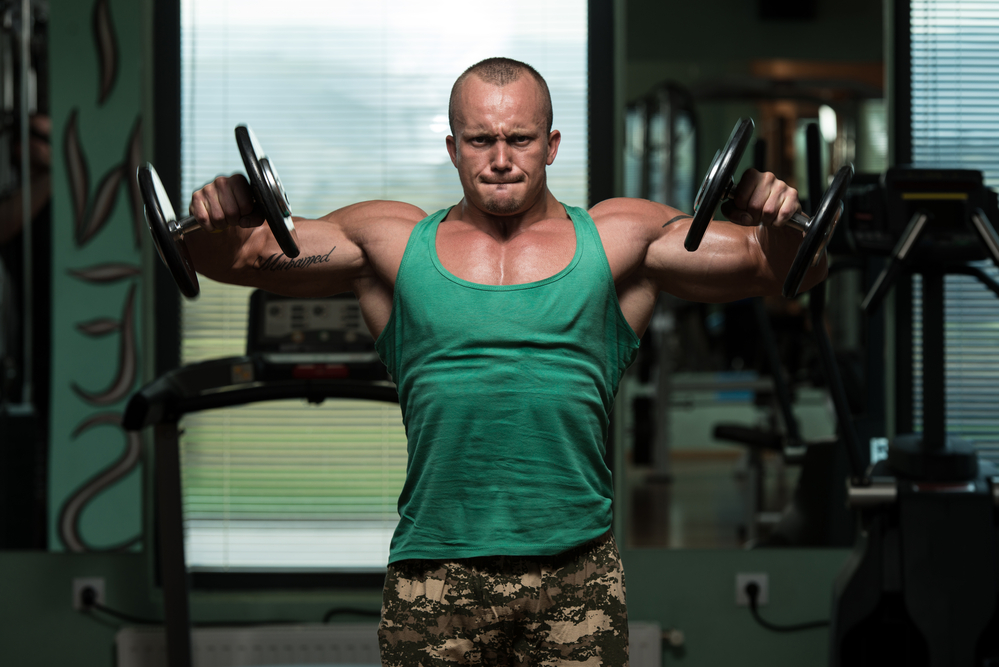
Let’s work on deltoid muscle development. This exercise will strengthen and develop your shoulders, visually increasing their width. Overhead dumbbell press is usually performed while standing and requires a minimum level of training. The main thing is not to use too much weight and to follow the technique as accurately as possible to avoid injury to the elbow or shoulder joints.
What muscles work during the exercise?
The exercise primarily loads the deltoid muscle, which is known to be the brachialis muscle that forms the outer contour of the shoulder. In other words, powerful and broad shoulders are a consequence of a developed delta.

Dumbbells are lifted up through the sides
Anatomically, the deltoid muscle consists of three sections:
Front section
Middle or side section
Rear section
Overhead dumbbell lateral raise is aimed at the middle (aka lateral) and back areas. The trapezius muscle (upper back and back of the neck) also works. The shoulder joints are additionally strengthened.
Exercise technique
Stand up and take your dumbbells. Now you are ready to start:
Try to hold your breath whereas lifting the dumbbells, as it helps to focus on the required effort and maintain balance, which is important since the exercise is performed while standing.
Once again, we draw your attention to the fact that lifting dumbbells over your head is not recommended to be performed with overly heavy dumbbells. Correct technique is much more important here than weight. The exercise should be done very smoothly, without sudden jerks.
Moreover, unnecessarily heavy dumbbells will simply prevent you from accurately following the technique, as jerks will occur, and you won’t be able to raise your arms high enough. Finally, it can lead to joint injury.

Exercise’s option with the position of the hands, palms inward
During the exercise, try to feel how the target muscles are working. The sensation should occur when the arms are raised approximately 30 ° concerning the body. You will feel the maximum tension when the arm is at about 45 ° about the shoulder line.
Contraindications
Overhead dumbbell lateral raise should be done with caution in people who have cardiovascular disease. It is better to consult a doctor beforehand.
Injured joints are a reason to refrain from doing the exercise. This is especially true of the elbow and shoulder joints, which bear the bulk of the load.







